#Reiwa Period
Photo

Japanese Period Timeline Infographics
Did a simple timeline. It’s hard to summarise each period with just a few words. Hope you like it! 🤓
Pop Culture Trivias:
Ghost of Tsushima is based on the Mongol Invasion of Japan which took place in Kamakura Period where the descendant of Hojo Masako (wife of Minamoto no Yoritomo, the first Shogun of Japan), Hojo Tokimune led the defense.
47 Ronin starring Keanu Reeves, is based on the actual event of 47 loyal Ronin taking up arms to avenge their lord, that took place in Edo Period under the rule of the Tokugawa Shogunate.
The Last Samurai starring Tom Cruise, is based on the Satsuma Rebellion that took place in Meiji Period where Saigo Takamori (Ken Watanbe’s character is based on) led the last Samurai war against the modernised Imperials.
Rurouni Kenshin takes place during Meiji Period where he served the Imperial while his “rival”, Saito Hajime served the Shogunate before he became an Imperial Officer, which is why Saito “dislike” Kenshin in the beginning.
#japan#infographic#japanese timeline#japanese periods#japanese infographic#japanese illustration#japanese art#japanese history#japanese culture#nara period#heian period#kamakura period#muromachi period#azuhi momoyama period#edo period#meiji period#taisho period#showa period#heisei period#reiwa period#samurai#kamakura#ghost of tsushima#the last samurai#47 ronin#satsuma rebellion#rurouni kenshin#saito hajime#hojo masako#minamoto no yoritomo
179 notes
·
View notes
Text
Kamen Rider Zero-One: Secret Maneuvering of Metsuboujinrai. net
Kamen Rider Zero-One: Secret Maneuvering of Metsuboujinrai. net Arc Review
#仮面ライダーゼロワン #KamenRider #Tokusatsu #KamenRiderZeroOne #Television
This might be an odd place to start reviewing the Kamen Rider Series, but here we go! Today we’re taking a break from the Manga Reviews and jumping into Kamen Rider Zero-One. An interesting fact about this series, it was the first to debut during the Reiwa period and the thirtieth series in the Kamen Rider Franchise.
Instead of reviewing the whole series, we’ll be reviewing the series through…

View On WordPress
#Comic Books#Kamen Rider#Kamen Rider Zero-One#Reiwa Period#Reviews#Secret Maneuvering of Metsuboujinrai.net#Series Arc Review#Television#Toei Co. Ltd#Tokusatsu
1 note
·
View note
Text
2019 – Naruhito ascends to the throne of Japan succeeding his father Akihito, beginning the Reiwa period

1 note
·
View note
Photo

#tokyo#japan#tokyo station#January 1st#new year's day#on new year's day#The First New Year's Day of Reiwa period
0 notes
Text
20 Year Old serves only REIWA Period food at 2 Year old Restaurant
49 notes
·
View notes
Note
If you would have to do a video or picture series called "100 Years of Wafuku fashion", which covers the decades 1900s to 2000s (or maybe you can extend it to up to maybe the 2020s). Which shows not only what the clothing looked like but other parts of the ensemble as well (i.e. hairstyles,make up, and accessories). What will you show as like the representation of each decade?
Fashion and hairstyles history overview could easily fill a book. And we are not even touching the issue of handling subdivisions like social class, areas of Japan, subcultures, etc etc.
So, pinpointing fashion trends over such a loooong period of time is difficult... Maybe one day I'll have the bravery for such a project but today is not the day xD
Still, off the top of my head, you can find those subjects (loosely) covered in following past posts:
[100 Years of Beauty: Japan - Research Behind the Looks] video, which goes with this video released by CUT
[Evolution of furisode fashion from the 1950′s to 2020′s] charts
For hairstyles, look at the nihongami tag, especially Shota Kotake's illustrations and Nancy Duong's Hairstyles of Taisho Japan (new source is here)
My kimono tag is not truly organized by eras :S You can still check the following periods: Meiji, Taisho (or Taisho romance), WWII. Also check any "antique"* mention.
Post WWII is messier. I have a few things filled under Showa, and virtually nothing tagged as Heisei ("vintage"* is not properly ordered enough :S). For late Heisei/Reiwa look at modern kimono tag.
(* on this blog, I use antique and vintage quite liberally!)
I can't find all the posts I am thinking of, but subcultures I've covered in the past includes moga, bankara, gyaru, decora, kawaii / loli, bozozoku, ...
I'll also recommend this article (cw: USA internment camps), as wafuku history doesn't stop at Japan and should also includes overseas. I don't have much on then occupied territories (like Manchouria, Korea, Phillipines, Singapore etc) + the Ryuukyuu but they should also be cited here!
Hope you'll find something useful among those messy recommendations ^^;
#ask#fashion history#japan#meiji#showa#heisei#reiwa#Japan subcultures#kimono#japanese traditional hairstyles#nihongami
73 notes
·
View notes
Text
It's March 3, which means it's time for hinamatsuri! Kiku loves checking out this festival every year. A Japanese festival with a big emphasis on dolls? We're both there! She's currently enjoying two different displays.
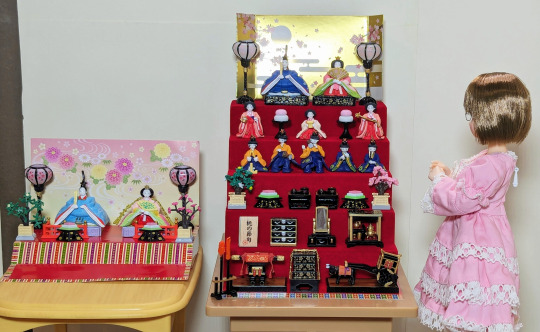
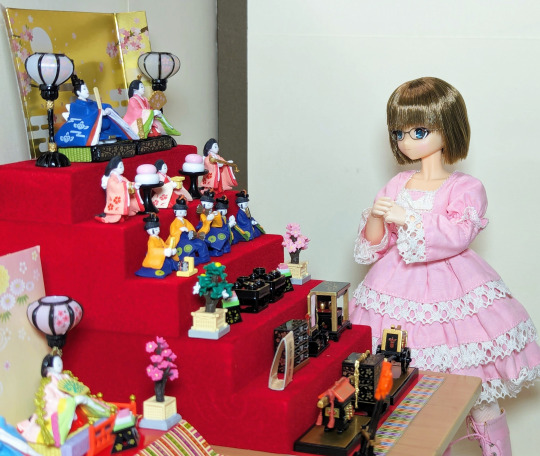
Hinamatsuri is an annual festival in Japan known as the doll festival or girls' day. The day is meant to celebrate having a daughter. The festival was traditionally known as the Peach Festival, as peach trees typically began to flower around this time. This is no longer true since the shift to Gregorian dates, but the name remains and peaches are still symbolic of the festival.
The primary aspect of the festival is the display of festival dolls in an elaborate fashion. Layers of dolls are displayed, with the emperor and empress on the top. The most recent emperor and empress were enthroned in 2019, marking the start of the Reiwa Era. While there are many ways to display these dolls, a full set of festival dolls includes seven platforms as follows:
1. Emperor & empress
2. Ladies of the court
3. Musicians
4. Ministers
5. Servants
6. Personal items of the royal court
7. More personal items of the royal court, plus hishi mochi

Emperor & empress:
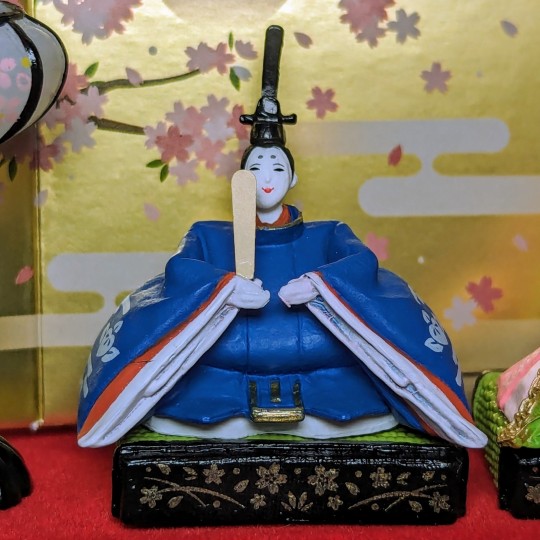

Ladies of the court:


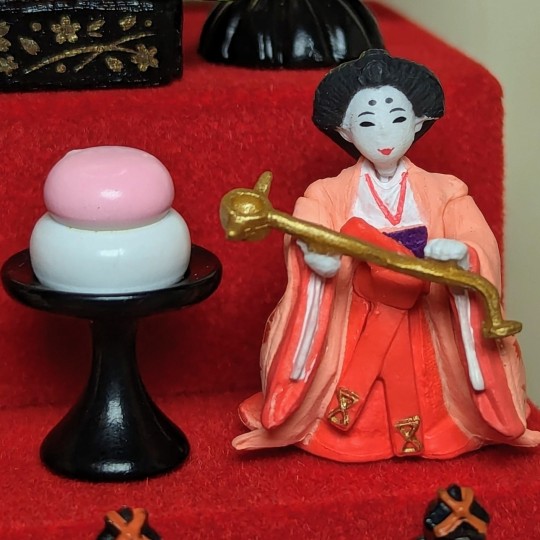
Musicians:
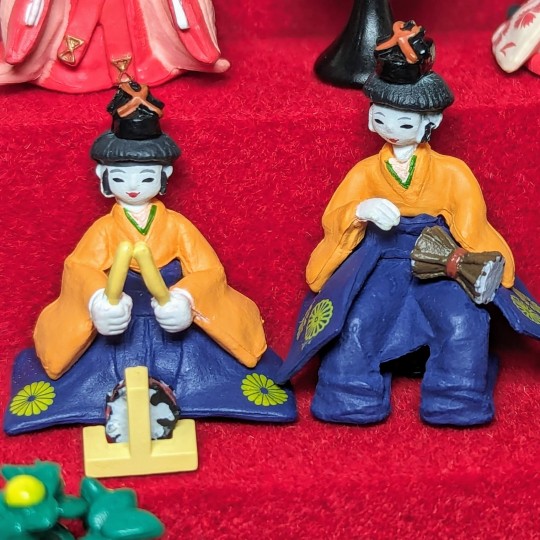


Personal items of the royal court and hishi mochi:

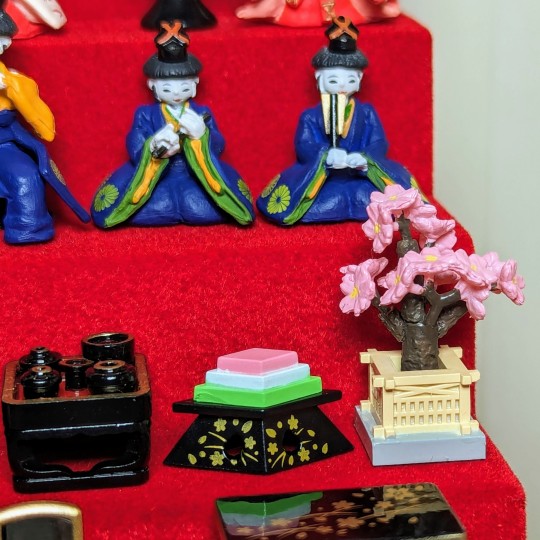



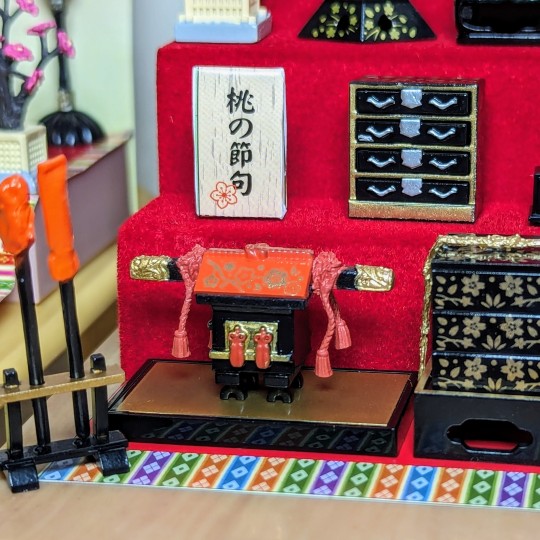
That was the new 2023 Re-Ment Hinamatsuri set. I also have this set in my collection from 2011, which features only the emperor and empress.

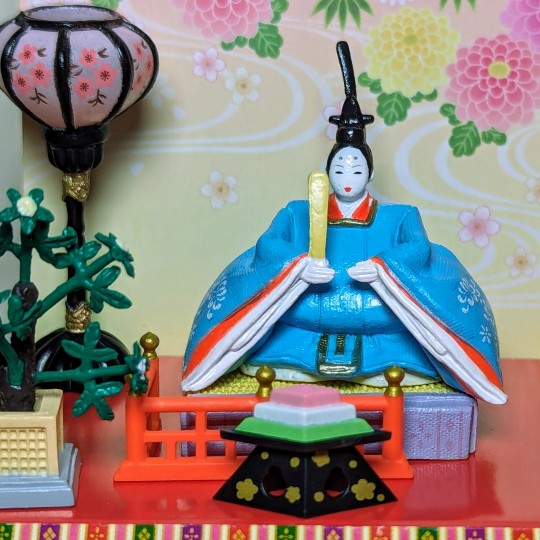

During this special time, girls also receive special sweets made of rice called hishi mochi. These sweets come in three colors: pink (meant to chase away evil spirits), white (symbolizes purity), and green (symbolizes health). The shape is believed to have originated in the Edo period, and to be a representation of fertility.
Handmade dolls are given to a young girl in February in a glass case, which is displayed prominently until March 3, then put away until next year (leaving them up on March 4 is believed to be unlucky and result in a late marriage for daughter). In many areas, the maternal grandparents still present the dolls.
This concludes today's daily cultural lesson. Enjoy!
#my plastic life#tenderwolf#doll photography#one sixth scale#azone international#azone pure neemo#azonejp#kiku ningyo#anime doll#rement#hinamatsuri#doll festival#japanese doll festival#girls day#myfroggystufffanpics
25 notes
·
View notes
Text
a friend wanted me to talk about reiwa yuri some more so here we go
so the baseline here is the history of yuri. the genre is long and stories and i'm not going to get into all of it, but: about a century ago, woman/woman romance novels started getting popular in Japan, particularly in all-girl academies, which were also hotbeds of lesbianism, as there were few or no men around. these novels nearly always ended with someone dying or the protagonists being married off to men. accordingly, the girls who grew up reading these novels typically married men and led normal lives. by the 60s and 70s, girls who had grown up in these academies had grown up and were finding jobs as mangaka. the year 24 group, as they began to be known, published tragic romances in the style that had been popular years prior. both the novels beforehand and the manga of the 70s and 80s were known as class-s, focusing on the same all-girl schools
class-s dominated yuri for decades. while it had its ups and downs, even into the 00s it was the predominant form of yuri, in works like Utena or Maria-sama ga Miteru. you had exceptions, but yuri's popularity was far less than its brother genre of yaoi. it had a popular fandom, especially around things like Sailor Moon, but straightforward yuri works would rarely reach the same heights
in the 00s, the subculture fandom for yuri was large enough that things began to change. the decade was a liminal period for the genre, seeing the birth of Comic Yuri Hime, a dedicated yuri manga magazine, as well as yuri becoming more common in other magazines. there also started to be more yuri anime, such as the works of studio Bee Train
despite all this, the trappings of the genre were still very much present. yuri began to move past the class-s aesthetic but other issues were still present. improvement was gradual, and constantly happening, but it still had a ways to go
things really began to change in the 10s. changing cultural attitudes alongside the smash success of manga like citrus propelled yuri to further heights
i use the term "reiwa yuri" to describe the modern era, but i think it's more accurate to say that it's started a few years before the reiwa era (2019). however, a lot of popular manga that started publishing before 2018 are still running, so they're relevant to the discussion, and you could argue for the start date of this new era being as far back as 2015 (which is when parts of Tokyo began to start pushing for same-sex equality, which has only gained popular in the years since)
reiwa yuri is called such because in addition to the increased popularity, it also comes with a better understanding of sexuality as well as more casual acceptance of queer people. homophobia is still used as a plot point, but it's easier for characters to be in out relationships
also, and this is subjective, but yuri is better than ever. i use the term "golden age of yuri" synonymously with reiwa yuri, because it's less specific in time but also because yuri is better than it's ever been. there's a greater variety of storytelling in the genre and stories can have more nuance. more and more yuri anime are reaching wide popularity, like Bloom Into You or Adachi and Shimamura. yuri is thriving, both in subculture and in the mainstream
100 notes
·
View notes
Photo

That’s TAKARAZUKA 2023 Flower Troupe
LOOK BACK on 2022 – You can feel their resilience and strength after overcoming the tribulations.

(The performance is Genroku. The Mizu Sumitomo Visa Card Theatre Musical “Genroku Baroque Rock” is full of glamorous costumes.)
From January, Yuzuka-san and Hoshikaze Madoka-san became the new Top Combi and started Flower Troupe’s 2022, going through a turbulent year. The year began with the Tokyo Takarazuka Theatre performance – a story of Chūshingura added with time traveling elements “Genroku Baroque Rock” and the show celebrating Flower Troupe’s 100th anniversary “The Fascination! – Flower Troupe’s 100th Anniversary To The Future and Beyond–”. But it was forced to stop right after it started and even though it reopened later, it was ultimately a performance period of 12 days.

(Yuzuka-san was what people discussed a lot, as she not only played the beautiful pianist Liszt in “Years of Pilgrimage” but also for actually performing the piano live.)
In the next Grand Theatre performance, it is the musical portraying the life of the piano magician Liszt “Years of Pilgrimage~The Wandering Soul of Liszt Ferenc” and the stylish show “Fashionable Empire”. In the Tokyo performances also, the first day opened a few days later but it was announced that there were suspensions again and the performance reopened only on the last day (Senshuuraku). But the Senshuuraku performance was the thing to believe that it’s not just about feeling negative – I believe that was what the Flower Troupe members were thinking on the day. That it was a stage that’s not too forceful, but sincere and passionate; that it’s enriching with precision rather than leaving a blank. Especially the thing that caught my eye was how powerful the group dances were. That’s how strong the resilience of the troupe is, with Top Star Yuzuka-san in the centre. We are looking forward to Flower Troupe in 2023 as they accumulate and become a level stronger in resilience.
Q: What kind of troupe is Flower Troupe?
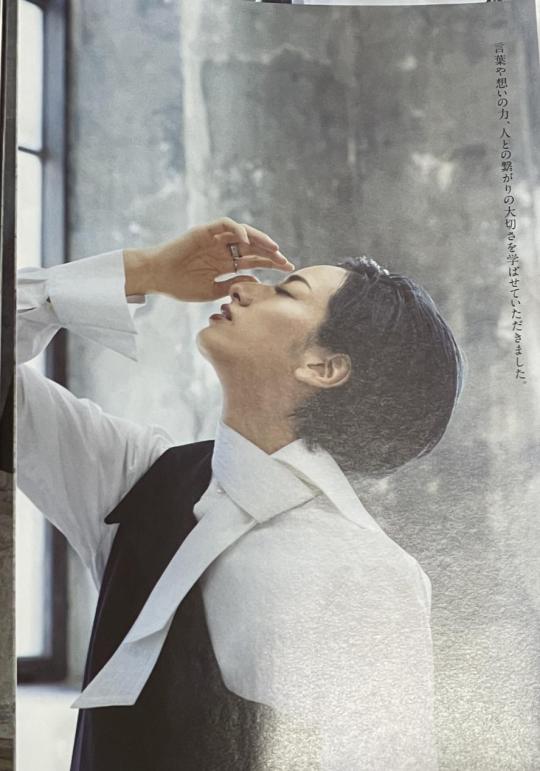
From Yuzuka-san:
Everyone is cheerful and bright and are wonderful kids that are moving forward enthusiastically. I’m thankful for them. Their energy in rehearsals are amazing, and I’m happy they can perform on stage with such liveliness and vividness. From now on, I’d be thankful that everyone could always be professional and aspire to improve, being a troupe that is honing and improving.

From Minami-san:
They’re very bright and I feel that everyone including the underclassmen have their own objectives and are progressing towards then. They have a passion for the performing arts. The underclassmen are always learning from the upperclassmen. The upperclassmen would also be the first in position ready to teach them, and when I see that every time, I’d think this is a good troupe.
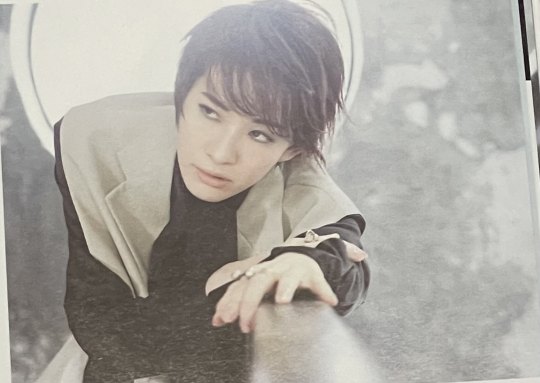
From Towaki-san:
We’re a troupe that’s often growing and expanding to be better. That otokoyaku and musumeyaku are all enjoying to focus on the key points of being otokoyaku and musumeyaku and I feel that we respect each other.
Q: What kind of person is Hoshikaze Madoka-san?
From Yuzuka-san:
I’ve been thinking of this ever since we’re a combi, but she’s quick at understanding what I want to do. I am truly grateful for her being straightforward, playful and ambitious and she enjoys the process of transforming with me. It's been about a year and a half since we started working together, but I feel like we'll be together even longer.
NEXT STAGE – This is the Takarazuka CLASSIC. A classical performance portrayed in Reiwa (year).
Flower Troupe is starting January in the Takarazuka Grand Theatre with the two-set show of “MAYERLING” and “ENCHANTEMENT–A Luxurious Perfume–”. “MAYERLING” portrays the historical story of the misfortunate Austria Crown Prince Rudolf as the protagonist, a masterpiece performed again ever since the premiere in 1983. The one who wrote the script, Shibata Yukihiro-san was a longtime playwright and director of Takarazuka Revue ever since the ‘60s. Yuzuka-san led Flower Troupe to perform “Sorrowful Cordoba” in 2021, “Love Burns in Firenze” in 2022 for the national tour performances. The Shibata works have a classical depth to it and when they were performed by Yuzuka-san who’s modern and stylish, she adds smartness and reality to the melodrama. Yuzuka-san played Rudolf once in “Elisabeth – The Rondo of Love and Death”, and she enjoys it very much to pursue the portrayal of the ultimate love. At the same time “ENCHANTEMENT” is a show with perfume as a theme. From the title, it is a word meaning “magical” and “rapture”. It’s a performance that is sometimes sweet, sometimes spicy and exotic, one that is gorgeously charming.
Q: Please tell us about your favourite scents.

From Yuzuka-san:
I love citrus smells when I’m in underclassmen times…recently I like something that’s a little stronger and deeper…compared to flower aromas, I like scents that are sweet like vanilla more. Also, when I clean the room, I open the window for a refresh of air, I love to light some aroma scented (candles) in the room.

From Minami-san:
I like the citrus and fresh kind of scents. I'm actually very sensitive to smell, so if it’s car refresher or car perfumes, I don’t like those with strong synthetic smell. I think scents I like can affect those around me, so I’ve been using perfumes a lot these years. Recently I like the laundry smell the most.

From Towaki-san:
Even though I like almost all kinds of good scents, recently among those scents, I like those with smoky aroma. That’s why instead of aroma candles, I’m the kind that likes the charcoal or incense smell. Recently, my favourite is using a spicy or smoky kind of spray type to fill the room with fragrance.
(Admin’s note: This is the last of the ANAN Translation series! 💙)
#yuzuka rei#hoshikaze madoka#minami maito#towaki sea#flower troupe#takarazuka#takarazuka revue#hibiscustranslation#柚香光#水美舞斗#永久輝せあ
56 notes
·
View notes
Text





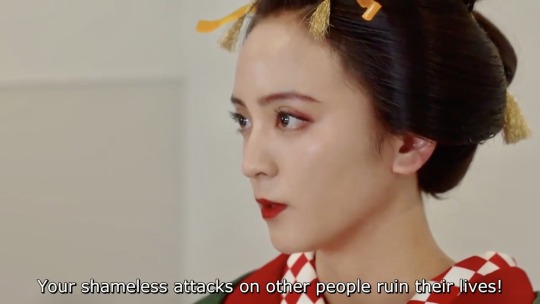
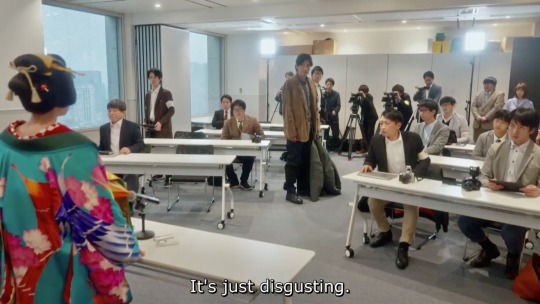
Edo Moiselle: Reiwa de Koi, Itashinsu (Ep 7)
An Oiran from Edo Period educates the media which loves to spread rumours, gossips and cancel culture for "likes" and "viral".
She's horrified to know how people today love to criticise without knowing the truth while hiding behind their "self righteousness".
#edo moiselle#reiwa de koi itashinsu#edo moiselle reiwa de koi itashinsu#yui okada#okada yui#japanese drama#j drama#jdrama#dorama#asian drama#japan#media#cancel culture#social media#oiran
25 notes
·
View notes
Text
Kamen Rider Geats and Ohsama Sentai King-Ohger Films Confirmed For July 2023
HENSHIN!
Kamen Rider Geats and Ohsama Sentai King-Ohger Films are Confirmed For July 2023
#仮面ライダーギーツ #王様戦隊キングオージャー #Tokusatsu #KamenRider #SuperSentai
Things are certainly heating up on Kamen Rider Geats and Ohsama Sentai King-Ohger, but this big announcement from Toei will make summer even hotter. Both shows will be getting a movie set to premiere in July 2023.
According to a new press release from Toei, both shows will be getting a new movie, but at this time, there isn’t a premise for both films. It has been confirmed that there are cast…
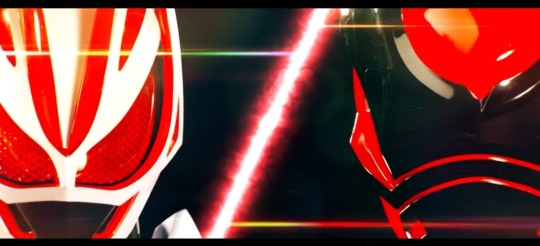
View On WordPress
#王様戦隊キングオージャー#Eiga Natalie#Kamen Rider#Kamen Rider Geats#Natalie.Mu#Ohsama Sentai King-Ohger#Reiwa Period#Super Sentai#Toei Co. Ltd#Tokusatsu#TV Asahi#仮面ライダーギーツ
1 note
·
View note
Text
Tokusatsu influences in Blue Period
Okay many people may not know but Magender in Blue Period is a reference to Tokusatsu, specifically Kamen Rider. I just want to spend my time going through some panels and just add a few fun facts as a fan of both shows.

Here is a brief rundown of Kamen Rider
It’s a long running TV show starting from the 1970s where a superhero who rides a motorcycle fight supervillains in order to protect Earth and their loved ones. When the franchise began they usually had an insect motif but has expanded in the last few decades to experiment with new ideas. There are 33 series currently and are split up into 3 eras (Showa, Heisei and Reiwa) based on the different monarchs who ruled over Japan at the time. There are other details but all you need to know is that it is pretty big series in Japan and has been making waves internationally.

First is the episode count. Usually kamen rider seasons shows last around 47-52 episodes on average however some can be as little as 31 episodes (kamen rider decade) and some can be as long as 98 episodes ( the original kamen rider series). The reasoning behind the episode count is that it runs all year round only a weekly basis. It starts from September and ends in August with a few breaks throughout the year.
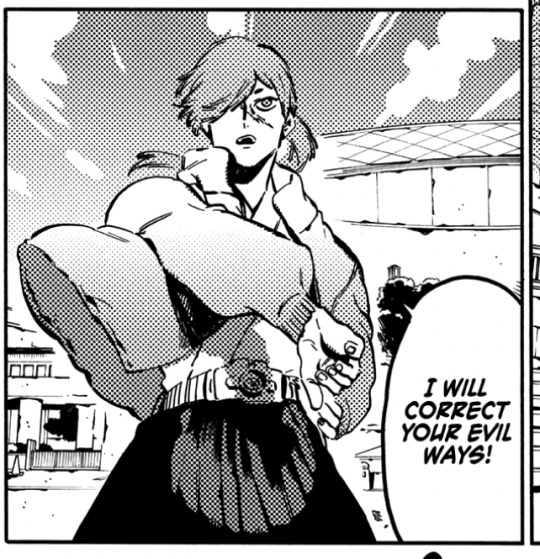
Another staple in the kamen rider and tokusatsu medium as a whole is the transformation belt or “Henshin belt”. This is used by the main character to transform into their superhero form and they often cry out “Henshin” (transform in Japanese) as well as their catchphrase. As seen below Magender’s catchphrase is: Eliminate evil and illuminate truth.

Furthermore Henshin belts are one of the most successful pieces of merchandise in Kamen Rider due to it iconicness with each new rider having their own unique belt. Another piece of merchandise would be the helmet which Meguro wore in chapter 45. Both can be pretty expensive so I feel for Yatora ( i want one so bad as well)


Last bits I want to go over is what Takada said in chapter 51. The demographic in Tokusatsu has always gone towards young kids, mainly boys. However there have been interesting incidences where a kamen rider series is watched by a different demographic, adult women. This phenomenon was not only due to mothers having to understand the plot of kamen rider for their children but because they found the main lead handsome.
This caused the widely known ‘Odagiri effect’ (named after the lead actor in Kamen Rider Kuuga) which wikipedia states that “A program attracts a larger than expected number of female viewers because the program stars attractive male actors or characters”
This doesn’t mean all women watch kamen rider for the handsome characters of course but this caused a large shift in how actors were recruited which still happens in the present day
The last comment about the relationship between the two male characters is quite an often take when it comes to the two male leads of the series. The tension caused by the two and their subsequent interactions as they learn to bond over the 50 episodes causes many fans to speculate if their bonds go beyond ‘friendship’. I could name many incidents in almost all series that are homoerotic but it is rare to have anything confirmed. To add fuel to the fire it isn’t uncommon to see actors of a particular kamen rider series to go onto starring in BLs which has lead to several memes by kamen rider fans.
Okay so that’s all. I’m very happy if anyone read this far and I hope this gave a bit of an insight on the Tokusatsu medium through the lens of Magender as I love Kamen rider and Blue Period to bits. I’ve barely seen anyone talk about it online so I just wanted to dedicate a long post about it. Have a great day :D
35 notes
·
View notes
Photo
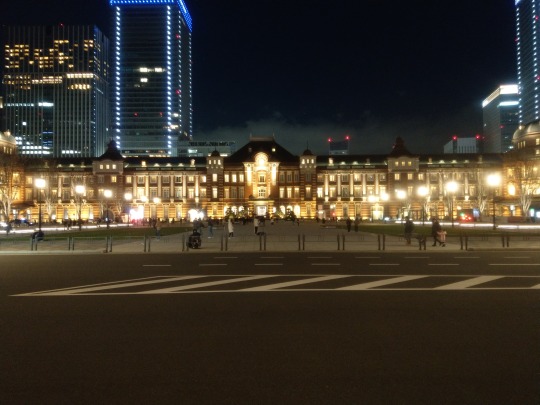
#tokyo#japan#tokyo station#new year's eve#the last day of the year#The First New Year's Eve of Reiwa period#december 31
0 notes
Note
https://twitter.com/TokuRed/status/1737971360931188797
I'm grouping a few of these asks together because they're all basically the same... and putting it under a readmore because they contain major spoilers (I'll also tag sparingly)




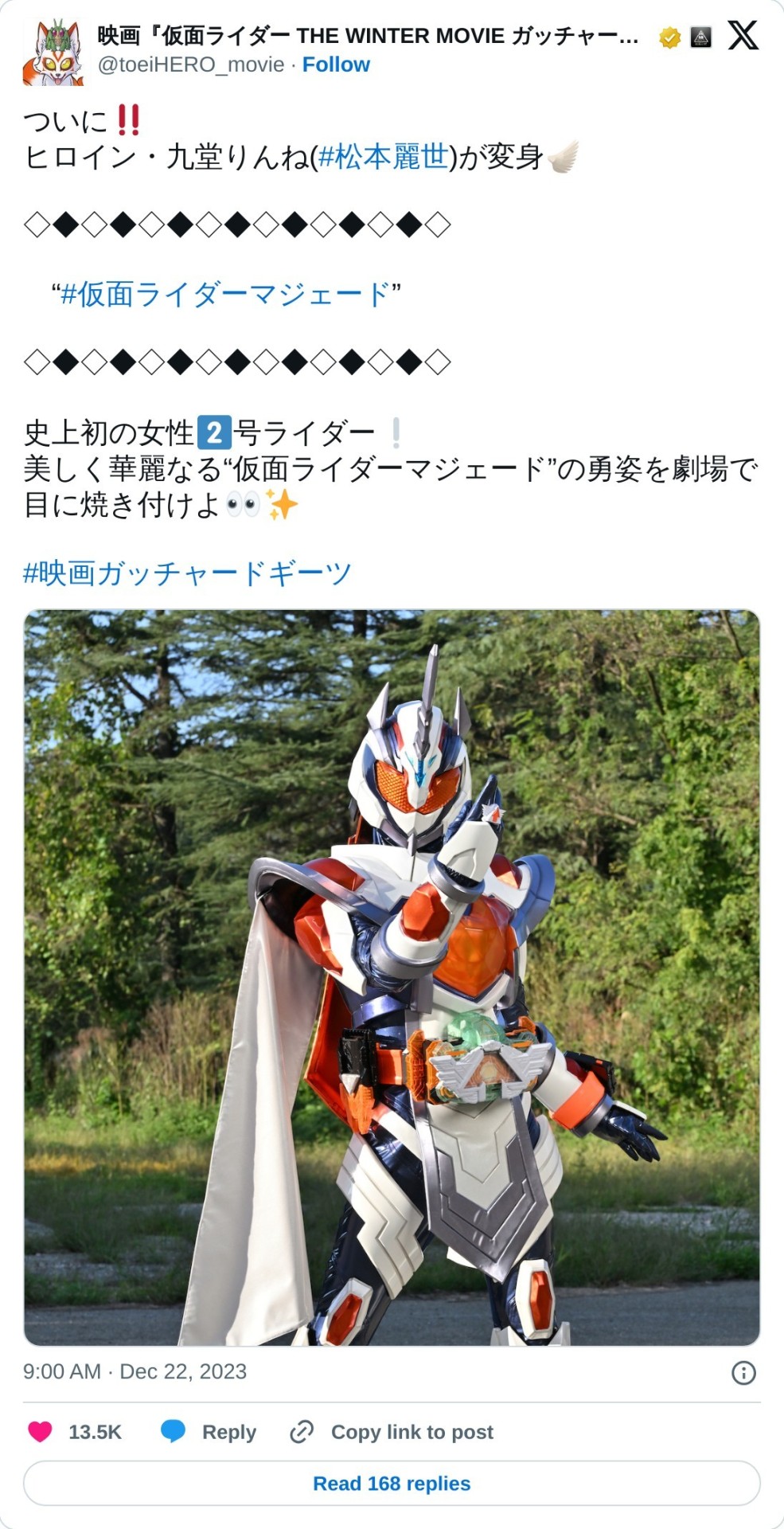
She's so beautiful
My daughter is so beautiful T-T
I'll admit, I'm tentatively excited at the prospect... I really hope they do her justice. I really don't want this to be a one step forward, two steps back sort of thing where Rinne is the secondary rider but she ends up fading into the background after her intro arc... and I really hope she escapes the pattern of secondary riders turning against the main riders that Reiwa seems really fond of.

I think they are purposefully invoking that for nostalgia factor, especially for the W to Wizard period. I mean, I feel nostalgic over it and I only started watching Rider seriously a few years ago, because I did start with those early Heisei Phase 2 shows.
I think they sorta got to gauge it because of how well the anniversary projects/celebrations for those shows went (OOO 10 movie backlash notwithstanding). Since people are clearly excited about those shows getting anything, maybe they thought it was a sign that trying to go for something similar for this show would pay off.
9 notes
·
View notes
Text
Here’s something I gotta say that I appreciate about Ace in Kamen Rider Geats and it's about why he's the best rider out of all the others in the DGP.
And why he became my favorite Main Rider of the Reiwa period.

What puts him above the other riders in the series isn't some power-up he mysteriously obtains that only he can use or him being some kind of chosen one, prodigy, or Jyamato making him more powerful. (Hoping that the last one doesn't become the case) The thing that puts Ace above the others is his skill.

All of the riders in the DGP start with the same amount of strength and advantages, but Ace’s skill, intellect, knowledge of the buckles, and experience as a Rider puts him above the others.
That's why despite having the most powerful items in the game, Keiwa couldn't handle the final boss with the others while Ace was able to singlehandedly take down the final boss. That's why he is the best that is why he's The Ace.
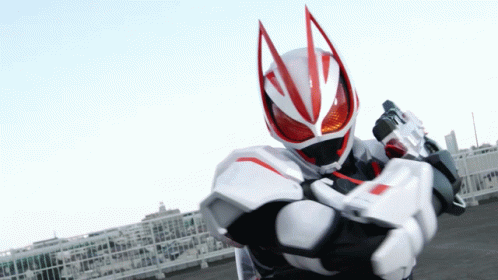
I made this post around Geats Ep 16. Before he ended up becoming the second Kamen Jesus….I still stand by my statement on him being my favorite Reiwa MC though.
54 notes
·
View notes
Text
My thoughts on Godzilla Minus One!

Spoilers beneath the cut~
After a long month of waiting and deftly avoiding spoilers (or not), here are my thoughts on Godzilla Minus One in the form of Pros and Cons, the latter of which were more than I had initially expected
PROS-
-Godzilla Minus One kicks ass in Imax. It might be too late for some to get a ticket, but if not GET THEM NOW.
-We’re very quick to get in on Godzilla action. It brings in a sense of tension from the get-go, gradually escalating to what you expect from a Godzilla film. 
-There’s a wonderful return of Godzilla’s regeneration powers, you love to see it folks
-this film has bar none the greatest Godzilla destruction from a human perspective. This Godzilla is vengeful and territorial, and mercilessly destroys anything perceived as a threat. Expect plenty of people, innocent or otherwise, to get unalived quite often. Minus One proves yet again that bigger isn’t always better (Minusgoji looks tiny compared to it’s Reiwa and MonsterVerse contemporaries), and uses it’s 50m size to incredible effectiveness.
-Minus One continues the trend of making the audience wait for Godzilla’s big heat ray reveal. If possible, don’t look up anything on it and go see for yourself. I thought it would be difficult to top Shin Godzilla’s “Who Will Know” sequence, but Minus One puts a new twist on Godzilla’s signature weapon.
-The soundtrack is quite good, I wouldn’t consider it my favorite of the series, but classic Godzilla themes return with new orchestration along with original work. Towards the end of the film, Godzilla‘s theme is mixed with the Odo Island ritual theme from 1954, which I think is just a touch of class
-Human characters are pretty bare, but still likeable. They’re more romanticized than the depiction of characters in Shin Godzilla, but I think they’ll remain memorable even among the series’ most memorable human characters.
CONS-
-I wouldn’t accuse minus one of historical revisionism, but there’s no getting around that this film romanticizes the heroic sacrifice through the lens of Japanese kamikaze pilots. Overall, the disbanded Japanese military of World War II feels sort of sanitized in this film. I don’t expect a thorough critique of World War II from this film at all, but the few times they view the war in a critical perspective feels outweighed by the fawning of characters for a heroic sacrifice for the people of Japan, directly framed against our main heroes’ inability to follow through with his own mission as a kamikaze pilot.
-Curiously enough, for the era they set this film in there is little to no American presence in Japan. Again, that’s not necessary to a Godzilla film, but this film takes place entirely in the period of US occupation of Japan after World War II. given that the film identifies American nuclear testing as Godzilla’s origin in this film, they keep the American occupation at arms length.
-Compared to prior films in the series, the women of Godzilla Minus One as very poorly written. Of the three named women, one gets “fridged” as motivation for our hero (until she isn’t) after she gains autonomy, and the other two are a reluctant caregiver and a young child. Would’ve been nice to see them have more involvement in the plot. 
-while the visual effects at times are very convincing, I’m not sure any miniatures were used at all in this film. I would’ve hoped for a few shots of miniature destruction, like Shin Godzilla’s inclusion, but to my eye, it looks like just vfx.
In summary: the few flaws I find with the film, prevent it from being truly great in my opinion. Yet still there’s plenty to enjoy from Godzilla minus one. I’ll be seeing this film again on Friday, so I’ll try not to judge it too harshly until my second viewing. 
8 notes
·
View notes